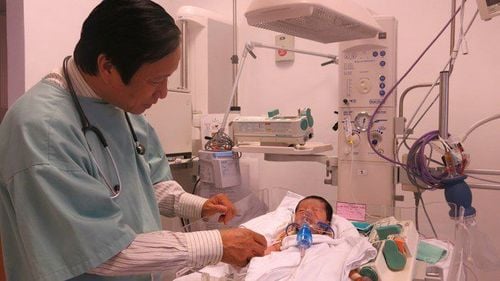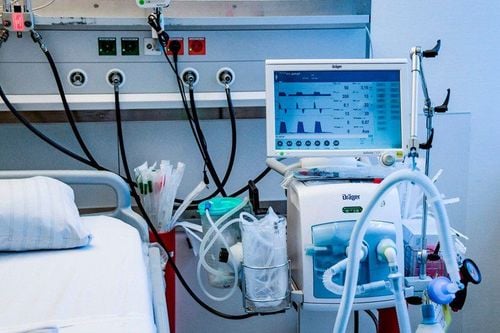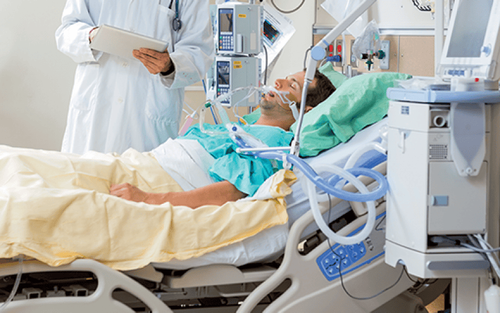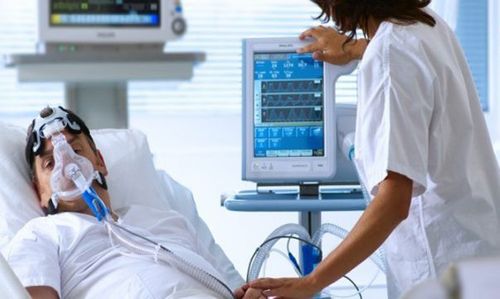This is an automatically translated article.
Posted by Doctor Truong Ngoc Hai - Emergency Resuscitation Department - Vinmec Central Park International General HospitalWeaning off the ventilator is the process of gradually reducing the ventilator's support and gradually increasing the patient's natural breathing to achieve the goal when leaving the ventilator. This process can take days, weeks, or even months. Wean the patient off the ventilator when: the cause of the need for ventilation has been handled, gas exchange is maintained with the lowest level of support (spontaneous breathing < 30 breaths/min)...
1. When to wean from mechanical ventilation?
Weaning off the ventilator is of great importance to the patient. Ventilators need to be removed as soon as possible because if this process is prolonged, the patient will increase the risk of infection, lung damage due to mechanical ventilation, airway injury, ... and a number of risk factors that cause difficulties. for the subsequent weaning process.
Accordingly, successful weaning off the ventilator is when the patient can breathe spontaneously without mechanical support for more than 24 hours. The rate of successful weaning from the ventilator and the length of time it takes to successfully wean off the ventilator varies widely, depending on the patient's condition, pathology, or other causes.
Criteria for weaning off ventilators:
FiO2 < 0.4 with pO2 > 60 and PEEP < 8 Patient has spontaneous ventilation on ventilator with rate < 20 Systolic blood pressure > 90 mmHg without vasopressors Cause for intubation endotracheal intubation was resolved. Extubation criteria:
Minute ventilation 10 L/min Tobin Index < 105 Dead space < 50% MIF (maximal inspiratory force) < - 20 mmHg
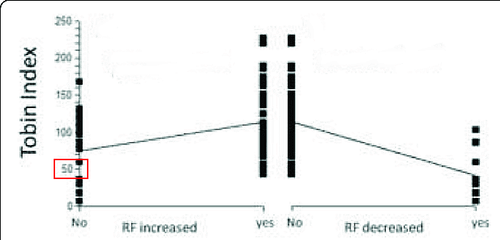
Chỉ số thở nhanh nông là một trong các tiêu chuẩn rút nội khí quản
2. Steps to perform the weaning process In order to wean off the ventilator, the patient needs to meet the conditions for weaning, if not, the conditions can be dangerous to the patient's health and life.
There are three basic methods of weaning from the ventilator: T-tube weaning, IMV (SIMV) and PSV (CPAP/PS)
T-tube weaning (intermittent weaning) is usually appropriate for cases. have normal cardiopulmonary arrest and short duration of mechanical ventilation (less than 3 days). This method has advantages such as: assessing the patient's ability to breathe spontaneously, can use mechanical testing of respiratory muscles, early and often assessment of the patient's ability to breathe on their own, Weaning time could be quicker. However, this method also has some disadvantages such as: the technician will take more time for the process, it is difficult for some patients to switch immediately to sudden withdrawal, and cannot compensate for the airway resistance caused by the tube. endotracheal intubation, which can overwork the patient and tire the diaphragm.
IMV/SIMV. This method does not take the technician's time, and at the same time it is very easy to apply. It ensures minimal minute ventilation. Besides, it also has a modern alarm system. Alternatively, this method can be used in combination with PSV (CPAP/PS). However, using this method also has some disadvantages such as no synchronicity between the machine and the patient, the risk of high breathing work, the possible prolongation of the withdrawal time, the more fatigued the patient and the possible loss of life. make the condition worse.
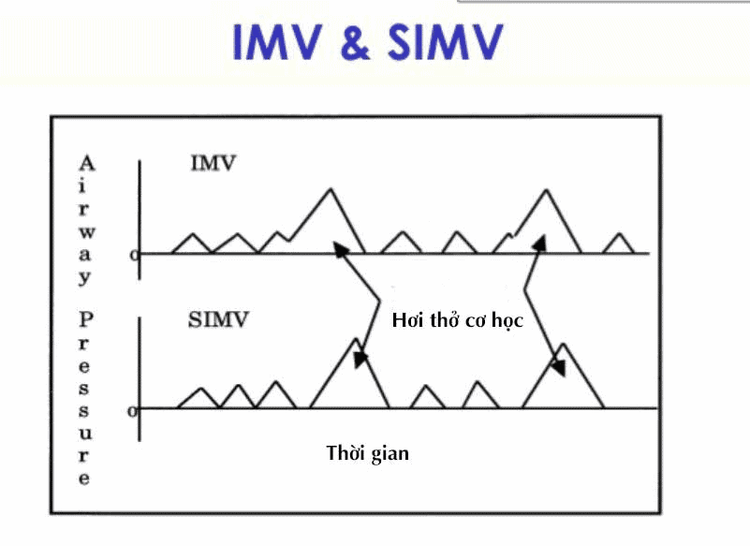
Hơi thở cơ học trên IMV/SIMV
PSV (CPAP/PS): This method improves some parameters of the IMV method, and it also has some advantages such as: maintaining diaphragm activity, increasing synchronicity between machine and patient, compensating for the required respiratory work, supporting all breaths, avoiding the burden on the respiratory muscles until the final stage of weaning. However, it also has some disadvantages such as: uncertain backup mode, minute ventilation can be very volatile, increase mean airway pressure.
3. When the patient fails to wean off the machine, what should be done? F (fluid) volume overload : diuretic if indicated A (airway resistance): airway resistance : check endotracheal size, obstructed or too small? I (infection): infection: antibiotic treatment according to protocol L (lying down): lying position, failure to achieve the ventilation/perfusion ratio (V/Q): raise the head of the bed T (thyroid, toxicity of drug): thyroid gland, drug poisoning: check thyroid function, recheck the list of drugs being used. O (oxygen): hypoxia: increased oxygen when the patient is off the ventilator. W (wheezing): spasms: nebulizer treatment E (electrolytes, eating): electrolytes, diet: readjust K/Mg/PO4/Ca, provide adequate energy. A (anti-inflammatory needed ?): need for anti-inflammatory drugs: considerations for corticosteroids in patients with asthma, COPD N (neuromuscular disease, neuro status compromised): neuromuscular disease, neurological deterioration: considerations conditions such as myasthenia gravis, lupus erythematosus, steroid neuropathy/paralysis, ensure that the patient is fully awake.
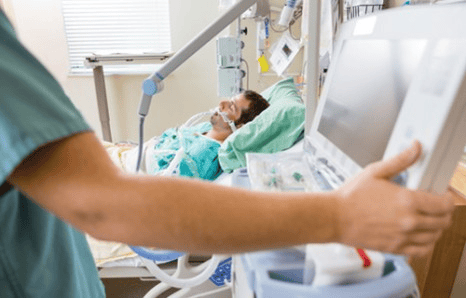
Một số trường hợp bệnh nhân có thể thất bại trong quá trình cai máy thở
Vinmec International General Hospital is a prestigious medical examination and treatment address chosen by many customers. At Vinmec, there are not only modern medical facilities and equipment, but also space and comprehensive medical services to meet the requirements of customers. In particular, the people who perform health examination, treatment and consultation at Vinmec are all well-trained doctors and nurses who will bring satisfaction to everyone.
To register for examination and treatment at Vinmec International General Hospital, you can contact Vinmec Health System nationwide, or register online HERE.






